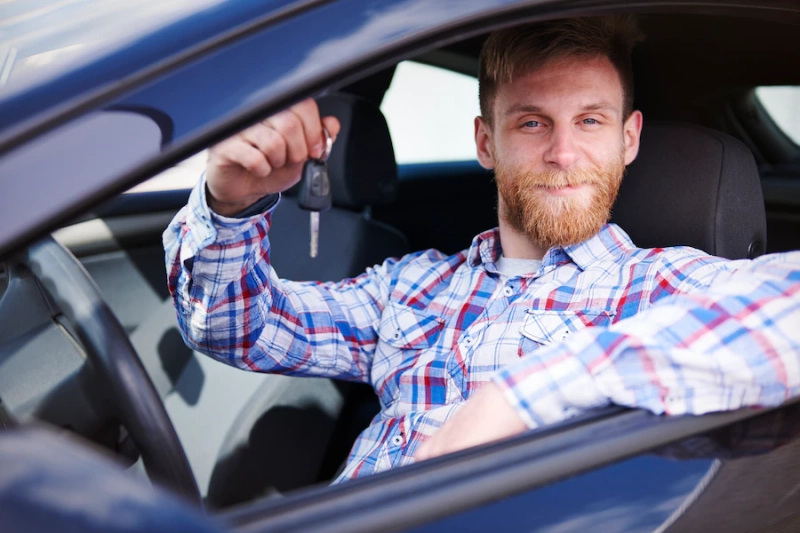Staying safe behind the wheel is a matter of focus and acting responsibly. The problem, however, lies in the fact that sometimes your estimation of the road conditions won’t be perfect. Your sight might be obstructed and the slipperiness of the road might be worse than you expect. Under these conditions, you’re not lacking in judgment – you’re lacking in information. So, what if you could have the tools that can help guide and assist you, thus making you more dependable? Here are some tools that can fill this role.
1. Blind Spot Detections
No matter how aware you believe you are, there are always some blind spots that you should be aware of. With a camera and sensor technology, it will be a lot easier to ensure that there are no vehicles in the blind spots. Sure, you can get used to some of these blind spots with time, however, this method is just more accurate and dependable. Even with an armored vehicle, avoiding collision is always the best course of action. This way, you’ll have an increased chance of getting there. Speaking of avoiding collisions.
2. Forward Collision System
Ideally, you would always keep a safe distance between your car and the car in front of you. However, what constitutes a safe distance? What is a safe braking distance, to begin with? Some suggest that keeping a distance of one-and-a-half of your vehicle between you and the car in front of you is safe, but there are quite a few counterindications. First of all, what if the road is more slippery than usual? What if the speed of all cars on the road is greater? An FCS (forward collision system) detects the distance between the vehicle in front of you and automatically minimizes the speed to the desired level.
3. Adaptive Headlights
Headlights that adapt as you drive can drastically increase visibility at night and make it a lot safer for you to navigate in unknown terrain. These headlights are there to allow you to get optimal visibility at all times. Also, they’ll be adjusted if there’s another vehicle in your path, which will create a scenario where you don’t endanger others. If this technology becomes standard in the nearest future, this could revolutionize the whole situation.
4. Reverse Camera
When compared to a rearview mirror, a reverse camera provides a wider, unobstructed, and more informative view. However, it’s not like you have to choose one or the other. The key thing to keep in mind is that a reverse camera is a bonus added to your already existing field of view and orientation. The larger the vehicle is, the bigger the priority it becomes to get a reverse camera. For instance, in a regular car, a reverse camera is a nice addition but a caravan reverse camera is a must-buy.
5. Auto-Steering
While a lot of people are talking about self-driving cars, a lot of drivers are still not completely comfortable letting go of the wheel. Now, auto-steering is something in between. In specific situations, you can just take over and avoid a collision. The system can even apply brakes when it encounters a pedestrian or picks up on an object with its sensors. Overall, this is a combination of safety and quality-of-life technology.
6. Voice-Controlled Bluetooth
The next thing you need to understand is the importance of reducing distractions. Now, the most common distractions are either your multimedia player or your phone. Sure, some vehicles have buttons on the steering wheel, providing you with some level of control over these devices, however, the amount of control you have is quite limited. With voice-controlled Bluetooth, you get so much more. In a way, this keeps your eyes on the road, thus keeping you a lot safer, as well.
7. Drowsiness Video Sensor
While this one may be especially unpopular, there are some ideas and concepts about a camera pointing at your face, scanning for signs of drowsiness. Falling asleep behind the wheel sounds like something that only happens to other people but it’s a real hazard worth addressing. If the camera notices drowsiness, it will tug on the seat belt of the driver to alert them of danger and urge them to pull over.
8. Teen-Driving Apps
Even if they’re not glued to their phone while driving, teens are still more prone to driving recklessly. So, what you need is an app that you can connect to the car’s GPS. This way, whenever they engage in reckless driving, you’ll get a notification warning you of the instance. This way, you get to intervene before it’s too late.
In Conclusion
In the end, it’s important to mention that no matter how good of a driver you are, safety is never guaranteed. Sure, about 90% of all car accidents happen due to human error but a lot of this can be mitigated if you could get more information, more accurate assessment, and a better reaction time. With the above-listed tips, you’ll automate some of these processes quite effectively.
0



